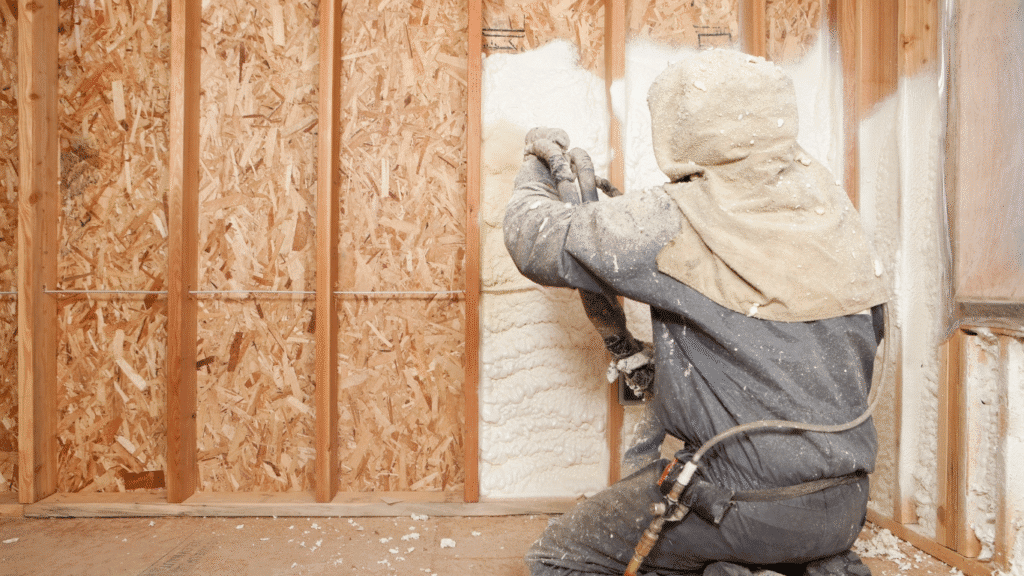
Insulation is one of the most critical components of a high-performance building envelope. At Buildgreen Industries, we prefer spray foam because of its ability to provide both thermal resistance and air sealing. Spray foam insulation is part of a larger strategy to prevent air infiltration by creating a sealed envelope in order to create homes that achieve exceptional comfort, durability, and energy efficiency.
Spray polyurethane foam (SPF) is a two-component mixture of isocyanate and polyol resin that, when combined at the application site, expands into a rigid or semi-rigid foam. As it expands, the foam fills cavities, cracks, and gaps before curing into a solid insulation and air barrier layer.
Spray foam insulation has better performance than traditional insulations (fiberglass batts, blown cellulose) for a variety of reasons:
• R-Value: Some sources find that closed-cell SPF offers nearly double the R-value per inch compared to fiberglass or cellulose while open-cell offers moderate R-values but still outperforms due to air sealing. Higher R-values are associated with energy-efficency.
• Air Infiltration: SPF reduces uncontrolled air leakage by around 70–90% compared to conventional insulations, improving HVAC efficiency. This increases the energy efficiency of the structure overall.
• Moisture Control: Closed-cell foam resists water absorption, providing resilience in humid climates
• Thermal Bridging: By expanding and adhering directly to surfaces, SPF reduces thermal bypasses common in traditional framed assemblies.
• Indoor Air Quality: By limiting uncontrolled air leakage, SPF reduces dust, pollen, and outdoor pollutant entry.
• Comfort: More stable indoor temperatures, fewer drafts, and quieter interiors (especially with open-cell SPF).
Buildgreen Industries and Energy Efficiency Spray foam insulation—both open-cell and closed-cell—offers a range of advantages, including air sealing and moisture control, compared to traditional insulation methods. While initial costs are higher, the long-term benefits in energy-efficiency make SPF a cornerstone of high-performance construction. In combination with Insulated Concrete Form (ICF) walls, Low-E windows, ERVs, and other energy-efficient features, spray foam helps create a tightly sealed building envelope that minimizes mechanical system loads and maximizes energy performance. This integration has contributed to Buildgreen homes achieving HERS scores as low as 18!
References
1. U.S. Department of Energy – Building America Solution Center: Spray Foam Insulation
2. Oak Ridge National Laboratory (ORNL) studies on SPF air infiltration reduction.
3. American Chemistry Council – Center for the Polyurethanes Industry: SPF Technical Data.
4. Building Science Corporation – “High R-Value Enclosures for All Climates.”